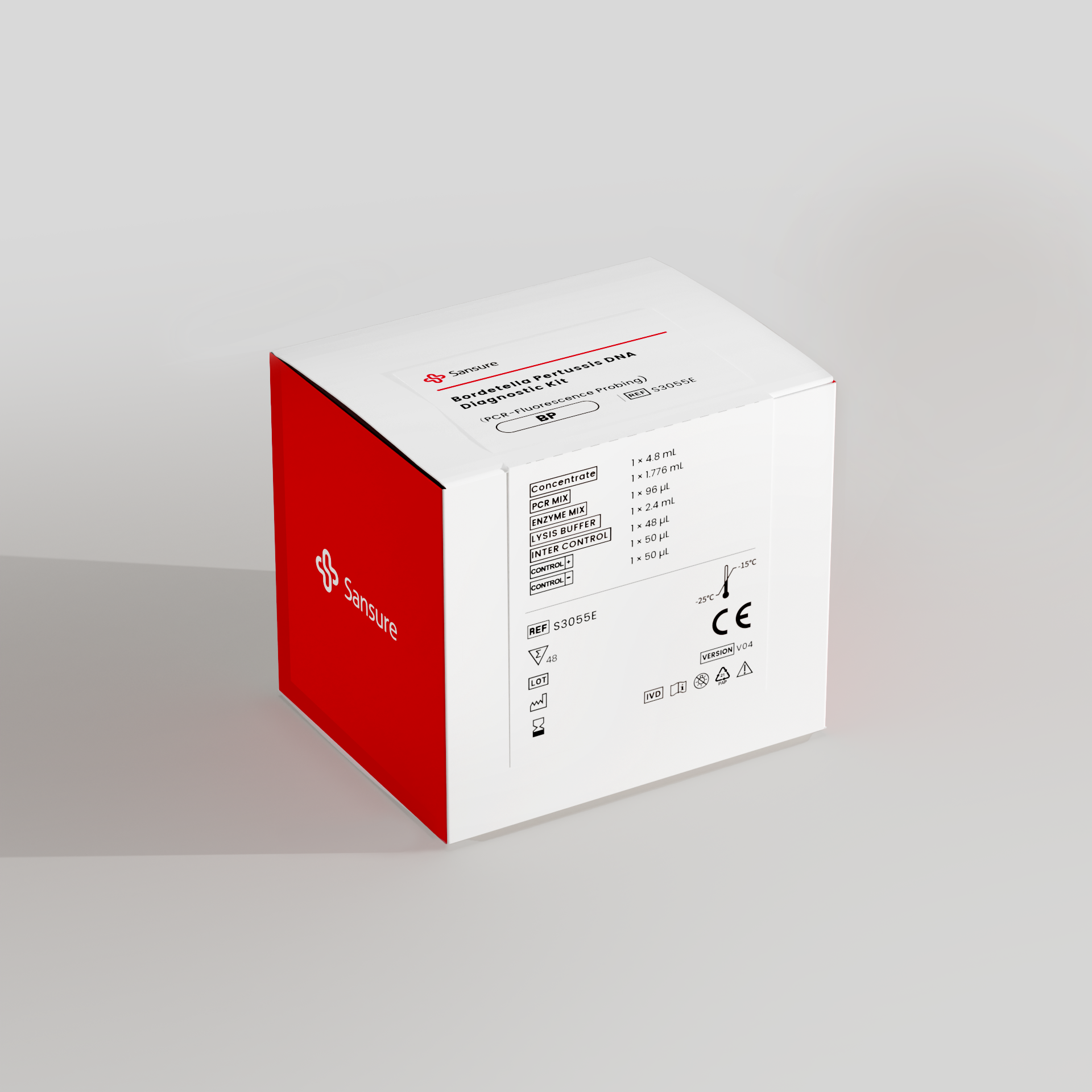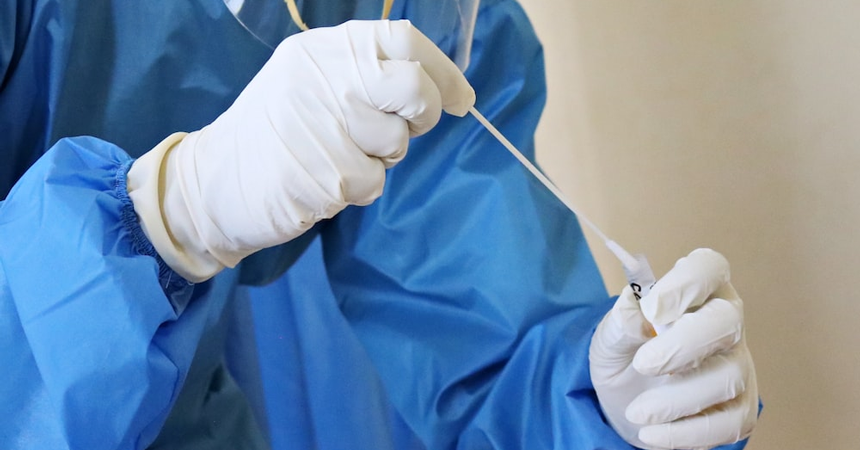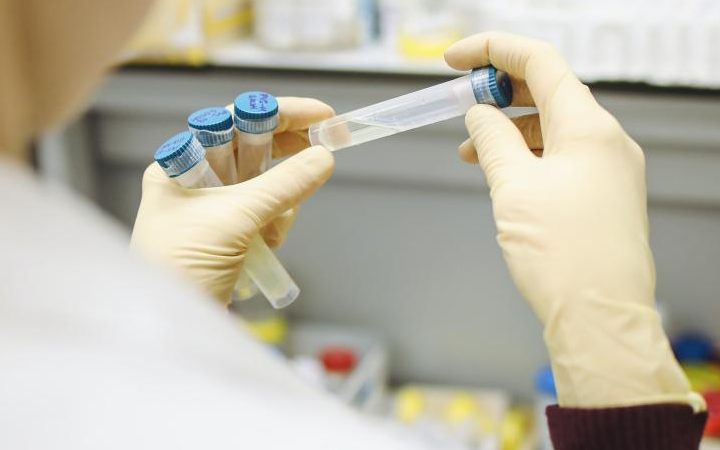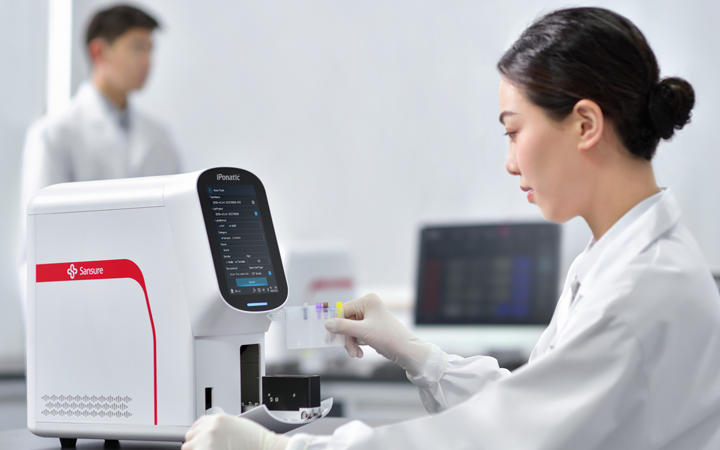Pertussis Diagnosis, Treatment & Prevention — Things Related to Babies’ Health
Pertussis, also known as whooping cough, is a respiratory system infection caused by Bordetella pertussis bacteria. Its main target group is infants below one year of age, mostly below six months, who don’t have a fully protected immunization system. But what are the correct treatment and prevention processes, and do we have an efficient pertussis diagnosis tool? Keep on reading to have a comprehensive understanding of the nightmare that bothers numerous families.

Pertussis Definition & Symptoms
Pertussis is an acute respiratory tract infection that can lead to violent, repeated coughing. It can last weeks or even months and is considered life-threatening for newborns. The severe coughing spells can lead to a whooping sound when the child/adult breathes in.
During the early stage, pertussis diagnosis is difficult because the symptoms are similar to the common cold. The early symptoms during the first 1-2 weeks include[1]:
- Stuffed-up or runny nose
- Occasional, mild cough
- Less than 100.4°F fever
- Sneezing
- A pause in breathing
After the initial 1-2 weeks, pertussis diagnosis is urgent because the cough becomes more common and may last over a minute. Patients may turn purple or red during these spells and also generate a whooping sound when breathing; some may also start vomiting.
Pertussis Causes & Transmission
Pertussis cough is caused by a bacteria called Bordetella pertussis. The bacteria enter the respiratory system through breathing and attach to cilia (hair-like, tiny extensions) on the respiratory tract lining. Afterward, the bacteria release toxins (poisons), which damage the cilia and swell the airways. The swelling leads to mucus secretions, causing severe coughing[2].
The whooping cough bacteria spreads easily from one person to another through the air. When the infected person coughs or sneezes, they also release bacteria particles in the air. Now, when the nearby person breathes in the bacteria, they have a high possibility of being infected.
What’s more, the infection can also be transmitted when you hold the baby in the chest and share breathing space. The bacteria can spread for around two weeks after the first coughing occurs.
What are Pertussis Diagnostic Methods
There are multiple pertussis diagnostic methods. Some of the main laboratory testing methods for pertussis are as follows[3]:
Culture
Culture is a highly specific laboratory test that provides strain identification and antimicrobial resistance testing. To confirm the pertussis diagnosis, the patient should have a nasopharyngeal (NP) swab or aspirate collected through the posterior nasopharynx.
The best time to collect the culture specimen is the first two weeks of the injection, as the bacteria will be present in the nasopharynx. However, the sensitivity of the culture test decreases if the patient has taken previous vaccination or antibiotic therapy.
Serology
Serology testing is effective in pertussis diagnosis at a later stage. It involves analyzing the patient’s blood to detect the presence of antibodies for pertussis infection.
The best time to collect the serology specimen is within 2-8 weeks after the coughing begins. The sensitivity of the serology test is also impacted due to previous infection, recent vaccination, etc. Moreover, it is not considered effective for infants under six months of age because of the interference caused by maternal antibodies.
PCR
Polymerase Chain Reaction (PCR) is a CDC-recommended and highly sensitive pertussis diagnostic test. PCR diagnostics features a molecular diagnostic technique, which requires the patient’s nasopharyngeal or throat swabs to be taken as a sample to detect the DNA of the Bordetella pertussis bacterium.
The best time to collect the PCR specimen is during the first three weeks of illness, as the bacterial DNA will be present in the nasopharynx. There are many advantages of using PCR test for pertussis diagnosis, as follows[3]:
- It can detect pertussis infection within the first three weeks, allowing early detection and better care.
- It provides improved sensitivity than the culture test.
- The previous vaccination and illness are less likely to impact the test, as the emphasis is on finding the bacterial DNA instead of live bacteria or antibodies.
- It provides results within a few hours.
In short, the PCR laboratory test is considered a reliable and efficient pertussis test due to its wide range of benefits over other tests.

Sansure, a globally reputed developer of innovative diagnostic products and solutions, offers a specialized Sansure Bordetella Pertussis DNA Diagnostic Kit. This kit is useful in detecting pertussis bacterial DNA in the swab specimen by applying the PCR fluorescence probing technique. The key features of the Sansure kit include the following:
- Accurate:200 copies/mL sensitivity for early detection of Bordetella pertussis
- Rapid:Results in 38 minutes
- Accurate: Contains UNG enzyme + dUTP to prevent contamination
- Accessible:Compatible with Sansure iPonatic for sample in and result out
Simply put, the Sansure pertussis diagnostic kit is a reliable, efficient, and fast way to detect the presence of Bordetella pertussis and initiate treatment accordingly.
How to Treat and Prevent Whooping Cough
Once the pertussis diagnosis detects the presence of Bordetella bacteria, the doctors will treat whooping cough with antibiotics. There are different antibiotics doctors can recommend based on the patient’s condition. Besides, strict isolation should be posed while the patient remains infectious. The antibiotic treatment should come with isolation, which should last at least 5 days after the treatment is initiated. Getting the treatment as early as possible is recommended to make the illness less aggressive and minimize the spreading.
The best recommendation for pertussis prevention is to get vaccinated. The most effective way to prevent pertussis is by ensuring complete vaccination. Typically, the pertussis vaccine is administered alongside diphtheria and tetanus vaccines and sometimes with polio, Haemophilus influenzae, and hepatitis B vaccines. Initially, a primary series of three doses of either the DTaP (diphtheria, tetanus, acellular pertussis) vaccine or the DTwP (diphtheria, tetanus, whole-cell pertussis) vaccine is given to children aged between two and twelve months. Subsequently, a fourth dose is recommended for those aged 11–24 months, and an additional dose should be administered between the ages of three and six years[4].
After the potential exposure to pertussis, close contact with pertussis cases, in other words, Macrolide antibiotics, most commonly azithromycin, erythromycin, or clarithromycin, are recommended for pertussis Post-exposure prophylaxis (PEP)[5].

Conclusion
Pertussis looks similar to the common cold, but it can be life-threatening for newborns who don’t have a strong immune system currently. The prolonged coughing spells, breath pauses, and whooping sounds can keep the patient exhausted most of the time. In that case, Sansure strongly suggests that everyone, especially parents, should emphasize pertussis prevention and make timely pertussis diagnosis if anything suspicious happens.
References





